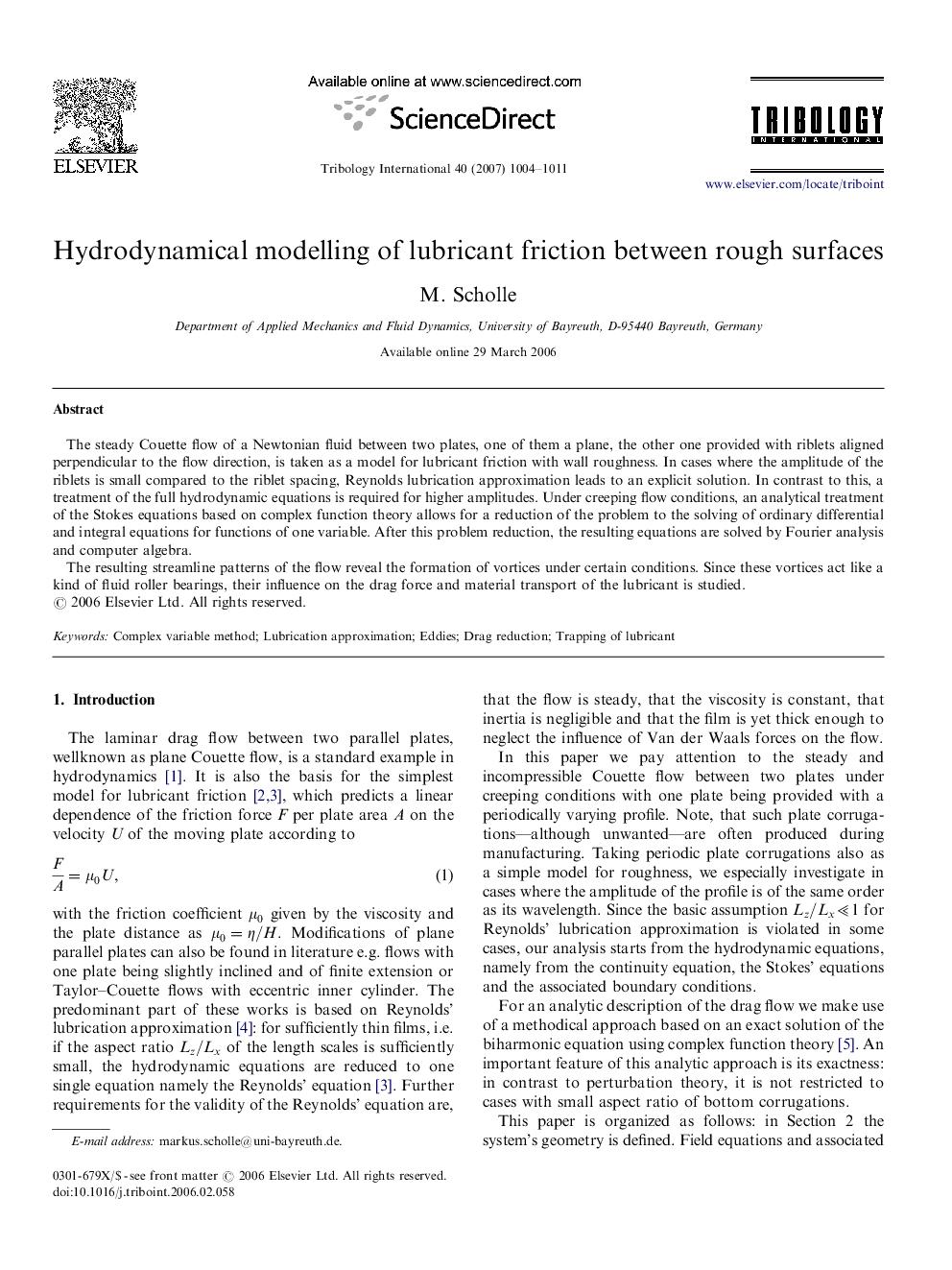| Article ID | Journal | Published Year | Pages | File Type |
|---|---|---|---|---|
| 616570 | Tribology International | 2007 | 8 Pages |
The steady Couette flow of a Newtonian fluid between two plates, one of them a plane, the other one provided with riblets aligned perpendicular to the flow direction, is taken as a model for lubricant friction with wall roughness. In cases where the amplitude of the riblets is small compared to the riblet spacing, Reynolds lubrication approximation leads to an explicit solution. In contrast to this, a treatment of the full hydrodynamic equations is required for higher amplitudes. Under creeping flow conditions, an analytical treatment of the Stokes equations based on complex function theory allows for a reduction of the problem to the solving of ordinary differential and integral equations for functions of one variable. After this problem reduction, the resulting equations are solved by Fourier analysis and computer algebra.The resulting streamline patterns of the flow reveal the formation of vortices under certain conditions. Since these vortices act like a kind of fluid roller bearings, their influence on the drag force and material transport of the lubricant is studied.
